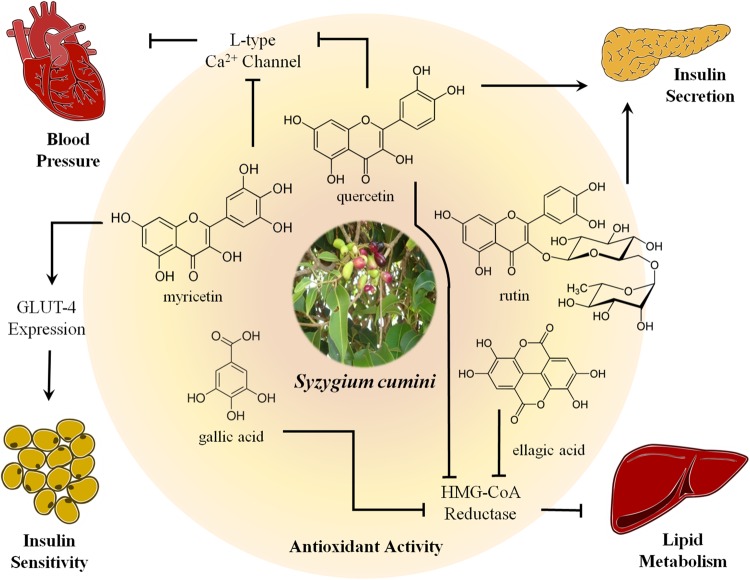FIGURE 1.
Biological properties and main mechanisms of action described for the most prevalent polyphenolic compounds identified in Syzygium cumini. Polyphenolic compounds identified in different parts of S. cumini are shown and connected to target mechanisms and/or organs by arrowheadlines for activating pathways and interrupted lines for inhibiting pathways. Antihyperglycemic effects of quercetin and rutin have been ascribed to the stimulus of insulin secretion through blockage of L-type calcium channels on pancreatic beta cells, a mechamism also shared by quercetin and myricetin for vasorelaxant and antihypertensive properties. Quercetin and phenolic acids, such as ellagic and gallic acids, inhibit 3-hydroxy-3-methyl-glutaryl (HMG)-CoA reductase in the liver, concurring for antihyperlipidemic properties. Myricetin also improves glucose homeostasis by stimulation of GLUT-4 expression in both adipose tissue and skeletal muscle. Notwithstanding the abovementioned effects, all the showed compounds possess well-characterized antioxidant activity, which is also expected to underlie these cardiometabolic properties of S. cumini.

